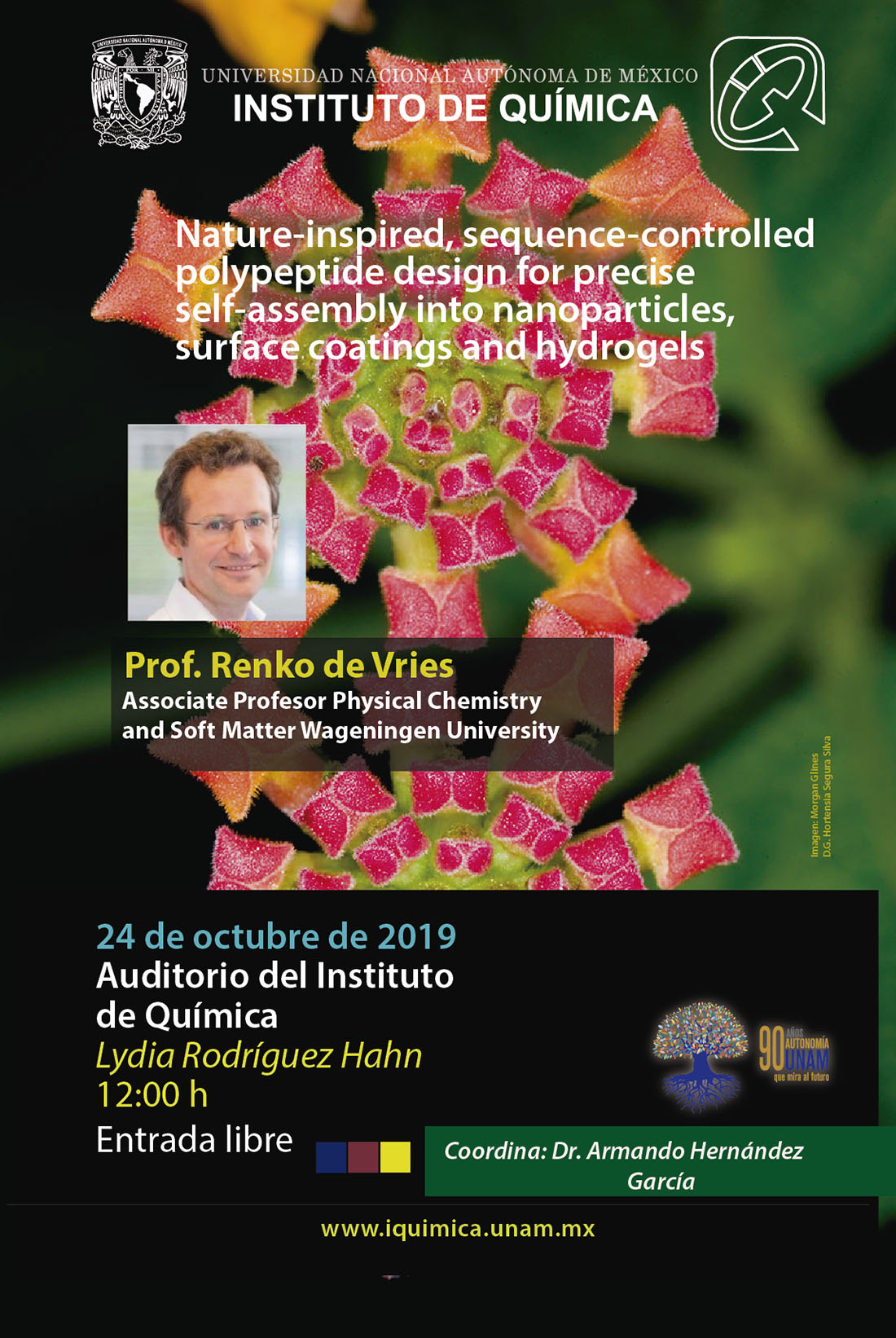Conferencia 24 de octubre de 2019

COORDINA LA CONFERENCIA:
Dr. Armando Hernández García
Departamento de Química de Biomacromoléculas.
Conferencia en el Instituto de Química
Nature-inspired, sequence-controlled polypeptide design for precise self-assembly into nanoparticles, surface coatings and hydrogels
Impartirá: Prof. Renko de VriesAssociate Profesor Physical Chemistry and Soft Matter Wageningen University
Difusión y comunicación: Hortensia Segura Silva.
Entrada libre
RESUMEN
Many natural materials are composed of structural polypeptides. Amino-acid sequences of these structural polypeptides often feature repeats of characteristic (consensus) sequence motifs. For example, the sequence of silk polypeptides (from silkworms) has crystalline blocks consisting of (GAGAGAGS)n repeats (where G is Glycine, A is Alanine and S is Serine), and amorphous blocks very rich in glycines and prolines. We use such simple consensus sequence motifs from natural structural polypeptides (silks, elastin, collagen etc) to design sequences for novel structural polypeptides that self-assemble into precisely defined nanoparticles, surface coatings and hydrogels. In the talk, I will present an example for each of these cases. First, we show how silk-like motifs, colllagen-like motifs and DNA-binding motifs can be combined to design polypeptides that mimick viral capsid proteins: the newly designed triblock polypeptides encapsulate and condense single DNA molecules in rod-shaped capsules. Next, we show how material-binding peptides (specifically silica-binding peptides) can be exploited to create self-assembling biosensor surfaces. Finally, as a first step towards designing artificial collagen-I fibrils, we show how simple interaction patterns should be positioned along semiflexible collagen triple helices, such that these spontaneously assemble into paracrystalline staggered fibrils, just like natural collagen-I triple helices.

